One of our deacons, John Staley, recently reminded me of something I’d written about the Eucharist four years ago. Since Eucharist means “Thanksgiving,” this seems like a perfect time to share it.
I was prompted to writing by C. Michael Patton, a Reformed blogger. He’d written a post entitled, “Why I Don’t Buy the Roman Catholic Interpretation of John 6 in Defense of Transubstantiation,” in which he argues that John 6 was never meant to be taken literally. He offered two primary reasons for this claim.
What follows are Patton’s arguments, and my responses:
First, that Christ is “always” being misunderstood, so it would be “irresponsible” to take Him literally:
1. Jesus is always being misunderstood. John rarely records Jesus’ correcting the misunderstanding of people.
“Loaves and Fishes” Relief, Church of Our Lady of Ravensburg (1897) The people in John 6 were looking for Christ to provide for them like Moses did and they were not interested in His talk about belief and eating his flesh. Some naturally thought that he was being literal about his statements. It is true, Christ did not correct them. But this is a common theme in the ministry of Christ. As Peter demonstrates, it is only those who stay with him that get the answers for eternal life (John 6:68). Often Christ would speak in parables and not tell any but those who were His true followers (Luke 8:10). The rest He let go in their ignorance since he knew all men and he was not committing himself to them.
John presents this side of Jesus more than any other of the Gospels when he says: John 2:24-25 “But Jesus, on His part, was not entrusting Himself to them, for He knew all men, and because He did not need anyone to testify concerning man, for He Himself knew what was in man.” He did not entrust himself to his listeners. Why? I suppose some wanted a king who would provide literal food for them like Moses did in the wilderness and they left when it became clear that He was not going to do the same. Some thought that He was speaking about actually eating his flesh and blood, I violation of the Mosaic Law, and they left. But why didn’t He simply correct their misunderstanding in this case? For the same reason He does not throughout the book of John. He often says things that are open to misinterpretation and then leaves His listeners in their confusion. Notice these examples
a. John 2:18-21 “The Jews then said to Him, ‘What sign do You show us as your authority for doing these things?’ Jesus answered them, ‘Destroy this temple, and in three days I will raise it up.’ The Jews then said, ‘It took forty-six years to build this temple, and will You raise it up in three days?’ But He was speaking of the temple of His body.”
Notice, Christ was not being literal here yet He did not correct the misunderstanding. This misunderstanding eventually leads to His conviction and death.
b. John 3:3-4 “Jesus answered and said to him, ‘Truly, truly, I say to you, unless one is born again he cannot see the kingdom of God.’ Nicodemus said to Him, ‘How can a man be born when he is old? He cannot enter a second time into his mother’s womb and be born, can he?”Notice again, Jesus does not correct Nicodemus’ misunderstanding (although, like in John 6, it is obvious to the reader that this is not to be taken literally).
c. The disciples want Jesus to eat: “Rabbi, eat” (John 4:31). Jesus answers: “I have food to eat that you do not know about” (4:32). “So the disciples were saying to one another, ‘No one brought him anything to eat, did he?’” (John 4:33).
This time Jesus does correct his disciples, but in frustration because they cannot see the symbolism behind it. In other words, they should know enough by now to interpret His words symbolically since this is the way He always spoke.
Now we come to John 6. John’s readers should know by now that Christ speaks symbolically in such statements as these. We should understand by now that Christ is always being misunderstood by “outsiders.” They also know that sometimes Christ corrects the misunderstanding (especially with true followers) and sometimes he does not. Therefore, it would be irresponsible for the reader to take Christ literally in John 6.
It’s true that Jesus often uses figurative language, which is a hyper-literal reading of the Bible (of the kind favored by some Fundamentalists and atheists) fails to grasp what is being taught. But it’s an exaggeration to say “Jesus is always being misunderstood” or that the Apostles “should know enough by now to interpret His words symbolically since this is the way He always spoke.” Imagine if we were to wave away our need to forgive our enemies, or the reality of Heaven and Hell, or Christ’s Resurrection, claiming that these were mere symbols, since Christ “always” spoke symbolically, and it would be “irresponsible” for us to take Him literally.
In any case, here’s what I said in response:
Luca Signorelli, Communion of the Apostles (1512) I really liked the way you approached this issue, and wanted to respond. I agree with you that not every time Jesus spoke, He was understood by the crowd, and I agree that an attempt to over-literalize Jesus has gotten a lot of people into trouble. I’ve actually used the same example from John 2:18-21 to show that people who brag about how “literally” they take the Bible are making an oft-repeated mistake. Take the Bible seriously, but not always literally – in other words, take it as it was meant to be taken.
That said, I think there are some pretty easy Catholic responses.
The answer to your first point is Mark 4:34: “He did not tell them anything without using a parable, though he explained EVERYTHING to his disciples in private.” So Jesus allowed the crowd to be confused, and then would explain things to the Disciples. The reasons are pretty clear — the crowds weren’t ready for the full Truth yet, and so He revealed it slowly, and according to His own timetable. The Disciples were given more information, and still didn’t really get it at first. So looking at your examples:
1 (a) is the crowd misunderstanding, with a note from John explaining what Jesus meant. How does he know? Because Jesus explained parables to His disciples, and John was a disciple.
1 (b) is the exact same thing, only it’s Nicodemus (and not a whole crowd) misunderstanding. Once again, John is “in the know,” so to speak, so he clues in his readers.
1 (c) has the Disciples initially confused, and then Jesus explaining it.
All of this comports with Mark 4:34. Now look to how Jesus reacts in John 6. The crowd, I think we’d both agree, think that Jesus is speaking literally. They didn’t initially think this: in John 6:42, they think He just means that He’s come down from Heaven (with no hint that they get anything about eating His flesh). After He keeps talking, their initial objection gets replaced with a much bigger one in 6:52, suggesting that NOW they are taking Him literally.
If this was like 1(a)-(c), we would see either a description of Jesus explaining this to His disciples, or a note from John explaining what Jesus meant. Instead, we see in John 6:67, “Jesus then said to the Twelve, ‘Do you also want to leave?’”
3rd century depiction of the Eucharist, catacomb of San Callisto So it isn’t even that John omits to include what Jesus really meant, or the fact that He talked to the Twelve afterwards. It’s that Jesus went to the Twelve, and instead of saying, “here’s what that symbol means” like He did for the other examples (and which Mark 4:34 says He would do), He basically says, “Take it or leave it.”
This is pretty unique amongst the teachings of Christ. The only other one can be found in Mark 9:9-10, when Jesus warns them not to say what they’ve seen until “the Son of Man had risen from the dead.” Mark 9:10 says, “So they kept the matter to themselves, questioning what rising from the dead meant.”So the two times we see Jesus refusing to explain away the “metaphor” are for the Resurrection and the Eucharist. If Mark 4:34 is accurate, this [is] because the Son of Man literally was to rise from the dead, and because Jesus meant the Eucharistic part literally.
The only thing that I would add to this response is that Patton assumes that “it is obvious to the reader that this is not to be taken literally.” That’s because he’s reading this through the lens of centuries of Protestant exegesis. As a matter of historical fact, that’s not how the early Christians approached this passage. They took it literally, as we see from the writings of the first and second, third, and fourth century Church Fathers.
Writing the first four centuries of Christians off as irresponsible, and incapable of understanding basic metaphors isn’t a very compelling argument — particularly for someone who bases his whole religion off of a belief that the Holy Spirit was working through these exact same men to preserve the Gospel. The burden is on the person rejecting transubstantiation to explain why the early Church believed in it: did the Apostles just forget to correct the idolatry of their followers?
Patton’s second argument is that John omits the institution of the Eucharist at the Last Supper:
2. Another important factor that Keating and other Catholic apologists fail to take into account is that John does not even record the central events of the Last Supper at all. Obviously if we took the Catholic interpretation of John 6 and believed John included this passage to communicate that believers must eat the literal body and blood of Christ in order to have eternal life, you would expect John to have recorded the events that it foreshadows. You would expect John to have a historical record of the Last Supper, the inaugurating meal of the Eucharist. But John does not. What an oversight by John! In fact, John is the only Gospel writer that did not record the Last Supper. Therefore, it is very unlikely that in John’s mind, a literal eating and drinking of Christ body and blood are essential for salvation. Remember John wrote the only book in the NT that explicitly says it is written for the purpose of salvation and he does not even include the Lord’s Supper.
This is a fairly common argument by Protestants who take John 20:30-31 to mean that the Gospel of John was intended to be sufficient for salvation, apart from the Church or the rest of the Bible. I responded:
Fra Angelico, Communion of the Apostles (1451) As for your second point of opposition, it’s true that John doesn’t include the Last Supper. But Paul does, making it one of the only biographical details which he records. To use the standard that “anything not found in John’s Gospel isn’t important” would take out the Virgin Birth as well as the [Institution of the Eucharist at the] Last Supper.
Remember that John is writing last, perhaps as last as the 90′s A.D. Notice also that Matthew, Mark, Luke, and Paul use almost identical wording for their description of the Last Supper, and that St. Paul claims to have received this “from the Lord” (1 Corinthians 11:23). This suggests two things:
(1) This was important enough for Jesus to tell Paul personally;(2) the Synoptic writers and Paul seem to have this memorized basically verbatim.
Now notice that the Didache (written before the Gospel of John), was a book intended for new entrants into the Church to explain some of the basics – a sort of “Idiot’s Guide to Christianity.” It includes Eucharist prayers in Chapters 9 and 10, and calls the Eucharist “spiritual food and drink.” Chapter 14 says that you have to confess your sins before you can receive the Eucharist, so that “your sacrifice may be pure,” and says that it’s celebrated on the Lord’s Day.So given that the people to whom John is delivering this message have already heard of the Last Supper from 4 Apostolic sources, plus the Didache, it’s no wonder that John didn’t feel the need to include that information. Besides that, his Last Supper discourses already run 3 chapters long (as long as the Crucifixion, Resurrection, and Ascension of Jesus all rolled into one). John’s Gospel is radically different than the other three because his goal is to build off of them.
Anyways, I like your post. I thought it was thought-provoking, and hopefully, I’ve provided at least some context for why people come out on the other side of those arguments.
The point that I raised in that comment is supported by Eusebius, a fourth century Catholic considered to be the first Church historian. Eusebius, who is one of the sources used in establishing the authorship of the four Gospels, tells us:
For Matthew, who had at first preached to the Hebrews, when he was about to go to other peoples, committed his Gospel to writing in his native tongue, and thus compensated those whom he was obliged to leave for the loss of his presence.And when Mark and Luke had already published their Gospels, they say that John, who had employed all his time in proclaiming the Gospel orally, finally proceeded to write for the following reason. The three Gospels already mentioned having come into the hands of all and into his own too, they say that he accepted them and bore witness to their truthfulness; but that there was lacking in them an account of the deeds done by Christ at the beginning of his ministry.
This is an important point, because it shows that Patton’s whole hermeneutic for understanding the Gospel of John is backwards. Patton suggests that anything John omits is false or unimportant, or “an oversight by John.” Eusebius shows that this is false: John intended to build off of the Synoptics, without repeating the same details.
Understood in this light, John is building off of the existing accounts of the institution of the Eucharist (found in the Gospels of Matthew, Mark, and Luke, as well as in the writings of Paul, and the Didache), by adding two important details omitted by the others: (1) Christ’s Last Supper Discourses (John 14-17); and (2) the prefigurement of the institution of the Eucharist in John 6. Fittingly, both the institution of the Eucharist and the Bread of Life discourse happen at the time of Passover (John 6:4; Matthew 26:17-19).
The Gospel of John wasn’t intended to be divorced from Scripture or the Church, and read in that divorced manner (and through the lens of faulty Protestant exegesis), it’s understandable why Patton would wind up misunderstanding of John 6.
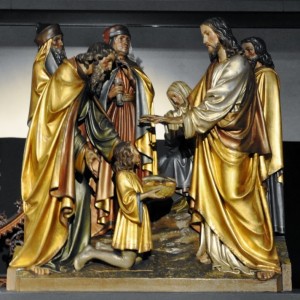
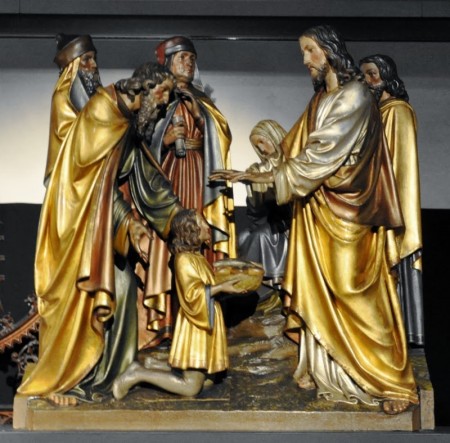
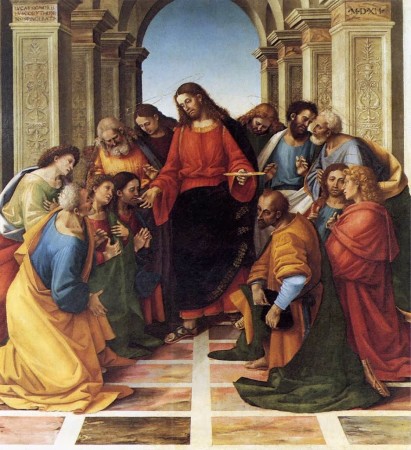
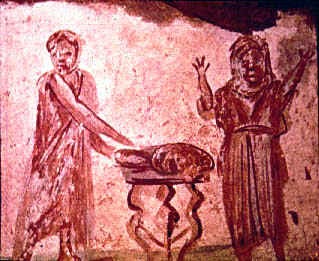
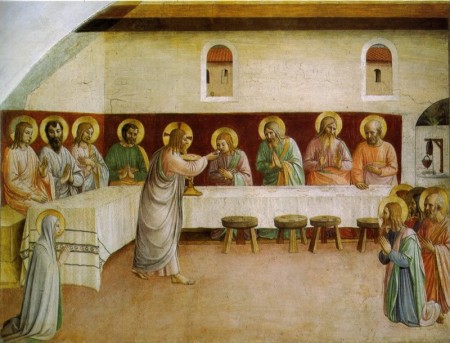
“John intended to build off of the Synoptics, without repeating the same details.”
I have always believed this privately and lacked the commentary from Eusebius to confirm it. Were this not true, what would John’s Gospel be? A “gnostic” text?—as Elaine Pagels seems to believe
I find the “John Omits the Institution of the Eucharist at the Last Supper” a rather weak argument because of the overall style of John’s composition.
For example, another extremely important event which John omits is The Transfiguration. This event is crucial in Jesus’ ministry because it’s a revelation of His divinity. Does John’s Gospel, therefore, not show Christ to be divine? Of course not! In fact, his Gospel is actually probably the strongest to affirm Christ’s divinity as the theme is found throughout the entire Gospel.
I would argue that the same is true for the Eucharist. John might not mention the actual event, but the rest of the Gospel is permeated with sacramental and Eucharistic language and images.
In fact, you could even argue that its absence of the words of Institution draws even greater attention to Eucharist! It reminds me think of “negative space” in paintings – it’s space which is there to serve a particular purpose, in this case to point you back towards the Bread of Life Discourse and the Feeding of the Five Thousand.
Let’s tally the evidence:
1) The plain text: “For my flesh is meat indeed [alēthōs, Strong’s G230: truly, of a truth, in reality, most certainly], and my blood is drink indeed [alēthōs, Strong’s G230: truly, of a truth, in reality, most certainly]. In other words, Jesus said, ‘…my blood is truly, in reality, and most certainly drink.’
2) Cultural context of the expression ‘to eat one’s flesh’: “to eat the flesh of anyone, i.e. to act cruelly towards him esp. to backbite him.” Did Jesus mean, ‘He who acts cruelly towards me will have eternal life?! http://tinyurl.com/pgmvs9h
3) Literary context: In the Gospel of John, John is clear to mark parables, explain figures of speech, or at least indicate figures of speech:
Example a above: a. John 2:18-21 “The Jews then said to Him, ‘What sign do You show us as your authority for doing these things?’ Jesus answered them, ‘Destroy this temple, and in three days I will raise it up.’ The Jews then said, ‘It took forty-six years to build this temple, and will You raise it up in three days?’ But He was speaking of the temple of His body.”
Example b above: b. John 3:3-4 “Jesus answered and said to him, ‘Truly, truly, I say to you, unless one is born again he cannot see the kingdom of God.’ Nicodemus said to Him, ‘How can a man be born when he is old? He cannot enter a second time into his mother’s womb and be born, can he?” But John has already announced what this means two chapters ago. John 1:33 “And I knew him not: but he that sent me to baptize with water, the same said unto me, Upon whom thou shalt see the Spirit descending, and remaining on him, the same is he which baptizeth with the Holy Ghost. “
Example c above: c. John 4:31-38. As Mr. Patton notes, Jesus explains his own figure of speech.
Example d: John 7:37-38 ” In the last day, that great day of the feast, Jesus stood and cried, saying, If any man thirst, let him come unto me, and drink. He that believeth on me, as the scripture hath said, out of his belly shall flow rivers of living water.” And then John explains , vs 39 “But this spake he of the Spirit, which they that believe on him should receive:”
Example e: John 10:7 “Then said Jesus unto them again, Verily, verily, I say unto you, I am the door of the sheep.” But John tells us in verse 6 that it is a parable.
Example f: John 15:1 “I am the true vine, and my Father is the husbandman.” Jesus then explains what he means in vs 5, “I am the vine, ye are the branches: He that abideth in me, and I in him, the same bringeth forth much fruit: for without me ye can do nothing.” In vs 6, we see a simile. “If a man abide not in me, he is cast forth as [hōs, Strong’s G5613 : ‘as, like, even as, etc.’] a branch, and is withered;”
Joe nailed it with Mark 4:34. The only time Jesus leave them hanging is the resurrection in Mark 9 and the Bread of Life discourse in John 6. And in Mark 9, it’s unmistakeably literal.
The Jews are confused, John 6:52, and Jesus doubles down in the next paragraph.
I applaud you for your insight and correctness! You might want to check out further information regarding how the Holy Eucharist will bring about the reunion of the Roman Catholic and Eastern Orthodox Churches in 2014. Get all the facts at http://www.one-catholic-church.com God Bless You! Father Michael
Fr Michael,
I follow the dialogue closely…and there is no way Father.
We will see what happens at the Feast of Nativity if Francis is admitted to the Eucharist…
…but the odds are akin to a female cardinal or bringing back a deaconess.
Much less unity by Pascha!
4) The manna reference: “And if the Eucharist is mere bread, and not the body of Christ, then Christ would have no ground for preferring the Eucharist to the manna, since the manna was sweeter and better than bread.”– Cornelius Lapide
5) Bread is already typologically tied into a real and local presence of the Lord with the Bread of the Presence in the temple. Ex 25:30
6) Christ is our paschal Lamb, and you eat the paschal Lamb.
7) Therefore whosoever shall eat this bread OR [Greek:ἤ] drink this cup of the Lord unworthily shall be guilty of the body AND [Greek:καί] blood of the Lord. We would expect to see kai in both places or e in both places, instead we see that unworthily taking one element makes you guilty of both elements!
8) Disrespecting the the physical act of consuming the Eucharistic sacrifice actually physically hurts you; a reaction worthy of a real token not a symbol only.
9) Give us this day our epi-ousios bread, our bread “beyond being”; the Vulgate says “our bread of super-substance” or ‘supersubstantialem.’
And then on the other end of the scale, there is only one single item to move in the Protestant evidence column: The fact that the bread doesn’t squish, and still causes gluten allergies, and so on.
That the substance of one thing wholly and entirely can turn into the substance of another thing is not objectionable. In fact, Jesus does that very thing with the water into wine at the wedding at Cana in John 2.
But what are the weaknesses in the assertion that the substance of flesh and blood are absent?
First, one has to dismiss all nine arguments above.
Second, relying on ‘image’ is already theologically dangerous territory. First, a quick glance at Christ would tell you he was a bearded bass-fishin’, home-made wine drinkin’ construction worker from the backwoods of Nazareth. By appearance, he looks a lot more like Uncle Si than he looks like one consubstational with the Father through Whom all things were made…
And that’s an argument that makes the Catholic Happy happy happy…
And then there are other cases in Scripture where the image doesn’t match the substance. Gen 18:2 comes to mind. Here are angels with dirty feet, who drink water and eat. If you pricked one’s finger, it is easy to conceive in the mind that they would bleed.
But this is no incarnate angel. Neigh. Rather the image (men) by a miraculous act deliberately doesn’t correspond to the substance (spirit).
I for one would more readily accept the double miracle in the change of substance and the non-change in the image of the bread and wine, than I would ever believe that He Who Is Truth would speak falsely when He says “My flesh is meat truly, certainly, and in reality.”
Thank you, Joe and Daniel, for your defense of the Catholic position. I have only one thing to add:
Protestant arguments tend to rely very heavily on the literal-figurative distinction. For example, Patton states that Nicodemus misunderstands Jesus because he took Jesus’ words literally, instead of figuratively. That is incorrect – Nicodemus is confused precisely because he understands Jesus literally, but cannot see how the rebirth would take place. He misunderstands not because he should have understood it figuratively/symbolically, but because he understood it physically instead of spiritually.
Protestants should not collapse the physical/spiritual distinction into the literal/figurative one. Yes, it is true that the crowd misunderstood Jesus in John 6, but how did they misunderstand Jesus? They understood him correctly in the literal sense, but failed to understand him in the spiritual sense. This is the same mistake that Nicodemus made. And just as Nicodemus would later realise that Jesus meant actual spiritual rebirth, so would the disciples later understand that Jesus meant eating His actual spiritual body, not the flesh and blood one they were seeing in John 6.
The same confusion runs through some of the other examples that Patton cites – when Jesus talks about the temple being destroyed and raised again, he is literally referring to Himself, the spiritual temple of God. The misunderstanding takes place on the physical/spiritual dimension, not on the literal/figurative dimension.
One way of helping Protestants understand this is by asking them: Are you actually and truly reborn? If you are, then you can’t have been symbolically/figuratively reborn, but neither have you been physically reborn, so how are you reborn?
Thanks for the article! I was wondering about this myself. I think you really nailed it for me.
God never intends to explain everything in detail to anyone, even the apostles. The Holy Spirit came to them at Pentecost and everything was clear to them at that time. That was the first oridination of priests. That’s why they were so happy and ready to go tell the world. The same applies to anyone of us who are truthfully wanting to follow Christ. Our hearts must be there first and then we will understand.
Thank you Joe Heschmeyer! I’m a revert to the Church and am very ignorant regarding Sacred Scripture. The task of understanding some of the Church’s teachings/doctrines is very daunting without inside help. Many of us either do not have the money for courses or cannot find any good Catholic biblical studies available. Keep up the good work! You’re helping lots of people with articles such as these.
Having read this so-called “evidence”, sadly it has more holes than a Swiss cheese, and claims Jesus is being “symbolic” when it is expedient for him to do so, but “not symbolic” with regard to the bread and wine. As such it is a very weak argument – if could even be called an argument in the first place. Surely a simple question will clear up this nonsense once and for all.
First, all Christians agree ( I hope) that Jesus – who was still 100% man (as well as 100% God) on the Thursday evening at the last supper, instituted the Eucharist by declaring “this is my body”, “this is my blood”, as it is recorded fully in three of the four gospels, as well as being alluded to by Paul in some of his letters. The question is therefore whether or not Jesus was being literal or symbolic. Roman Catholics believe Jesus was being literal; non Catholics hold that Jesus was being symbolic, in the same way he was being symbolic when he declared himself a “vine”, a “door”, a “shepherd” and so on. So the question is whether or not the body at the Last Supper was Jesus’ real body, given for all, and the wine was his blood shed for all, or not, as the case may be. Catholics hold that they are, because the bread and wine are “transubstantiated”.
This creates a huge problem, doesn’t it. For the RCC also teaches that Jesus gave his real body and blood only on the Cross. Enough crucifixes adorn RC churches to attest to this.
So, if Jesus gave his real body and shed his real blood on the evening BEFORE the crucifixion, something that you are bound to believe if you believe in transubstantiation, this negates all that the Cross is and stands for. If Jesus gave his body and shed his blood on the Cross, this makes transubstantiation nonsense. You cannot have both transubstantiation AND the Cross for they are mutually exclusive.
So the question remains – when did Jesus give his body and blood? On the Cross, making transubstantiation nonsense, or at the Last Supper, negating completely the role of the Cross?
Any REAL answers that are based on REAL fact?